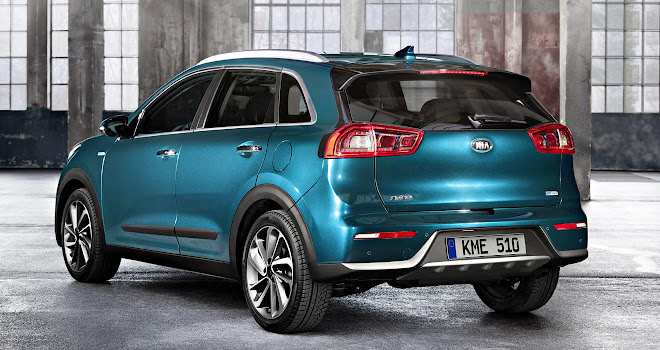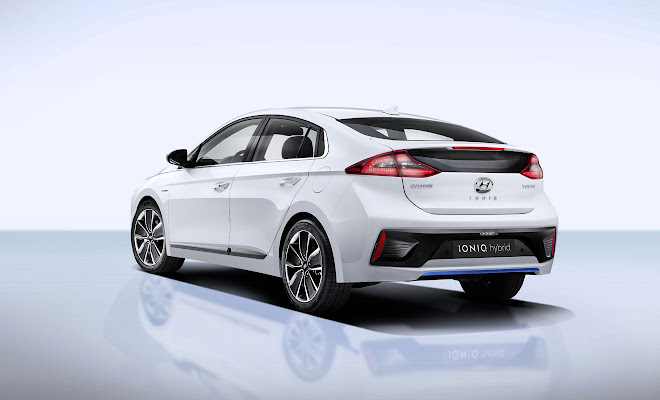Hyundai’s Ioniq hybrid will go on sale in the UK in October this year, marking a bold attempt to achieve what Honda’s Insight largely failed to deliver in 2009 – a convincing, cut-price alternative to Toyota’s Prius. Starting prices for the Ioniq hybrid stretch from to £19,995 to £23,595 across three trim levels, while the Prius range runs from £22,295 to £27,450. That could make the Hyundai quite tempting.
A pure electric version of the Ioniq will also arrive in the autumn, while a plug-in hybrid Ioniq is due to arrive in 2017. With hybrid, BEV and PHEV variants in its line-up, Ioniq will have all electric bases covered.
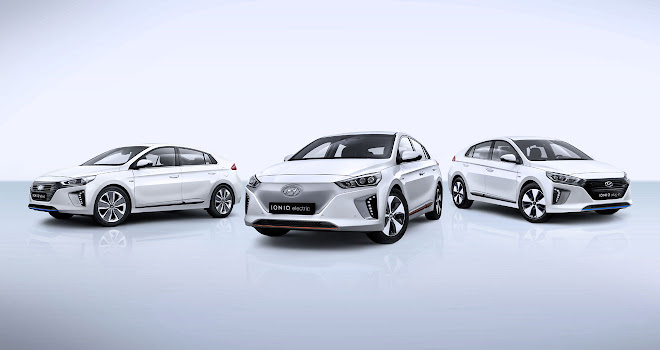
The EV Ioniq will feature a 28kWh battery and will cost from £24,995 – after a £4,500 helping hand from the Plug-in Car Grant. That’s not especially cheap compared to a Nissan Leaf, which starts at £21,530 to buy outright with a standard 24kWh battery, or £25,230 with the bigger 30kWh battery that became available in February.
Hyundai has claimed a maximum range of 174 miles between charges, compared to 155 miles for the 30kWh Leaf. It will be interesting to see how far the Ioniq EV can go in the real world. I hear the latest Leaf can actually be relied on to travel about 120 miles in mild weather and I’d be surprised if the Ioniq fares any better.

Meanwhile Hyundai’s sister brand Kia is offering its own alternative to the Prius that is very similar to the Ioniq in one sense and yet quite different in another. The new Kia Niro hybrid went on sale this week, priced from £21,295 to £26,995 across four trim levels.
Niro and Ioniq are similar because they are virtually identical under the skin, employing the same engine, battery, electric motor and many other component parts. They differ, of course, in body shape as well as price. The Niro is a high-riding softroader roughly the size of a Nissan Qashqai, while the Ioniq has about the same proportions as a third-generation Prius.
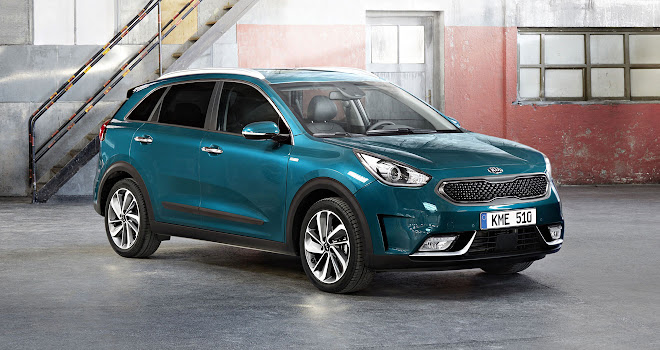
Body style does matter when it comes to economy. Official consumption scores for the Ioniq hybrid are about 10% better than the Niro hybrid: 79g/km of CO2 and 83.1mpg on the combined cycle test for the Hyundai, versus 88g/km and 74.3mpg for the Kia. The latter gets worse still if you opt for higher trim levels that put 18-inch rather than 16-inch alloys at each corner. These nobble the Niro’s scores to 101g/km and 64.2mpg. By contrast, all versions of the Ioniq have the same economy ratings and all ride on 16-inch rims.
While official economy figures are largely nonsense in real-world terms, it’s extremely unlikely that the Niro will trump the Ioniq when it comes to paying for actual petrol from a pump.

The Ioniq hybrid will also be marginally quicker to 62mph than the Niro, with the Hyundai taking 10.8 seconds versus the Kia’s 11.1 seconds. Weight will be factor – the Ioniq starts at 1,370kg but we don’t yet know how hefty the Niro will be. Kia has used a lot of hot-stamped high-strength steel in its construction, plus an aluminium bonnet and tailgate, to try to keep bloat at bay.
Bodywork aside, the Ioniq and Niro hybrids share a great deal of hardware. Both use much the same 1.6-litre petrol engine providing up to 104bhp, combined with a 32kW (43bhp) electric motor. Motor and engine can join forces or operate separately to drive the front wheels through a six-speed dual-clutch automatic gearbox. Overall hybrid output peaks at around 140bhp in both cars, with a maximum 265Nm of torque.
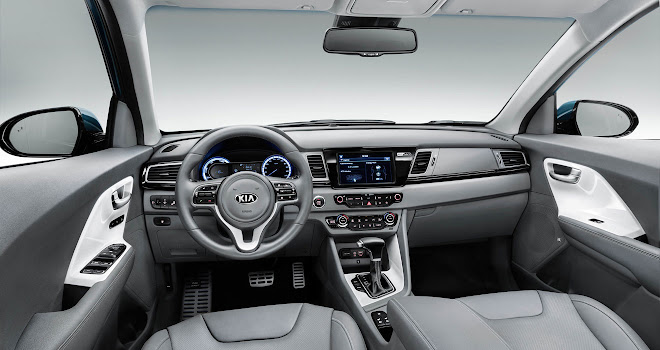
The electric motor is integrated into the transmission, allowing the engine to shut down while either car is moving under battery power. Both the Niro and Ioniq hybrids will be able to move off or travel at moderate speeds by electric power alone, for short periods of time.
A 1.56kWh lithium polymer battery has been housed under the rear bench seat, alongside the petrol tank. Both the Kia and Hyundai have a 45-litre tank, presumably of much the same shape.
Despite substantial cost and performance disadvantages on paper, I would not be surprised to see the Niro sell more strongly than the Ioniq, especially if you ignore sales to minicab drivers.
I suspect the mock 4x4 crossover body style will prove the more popular of the two Korean hybrid rivals – perhaps even more so than Toyota’s iconic Prius.
